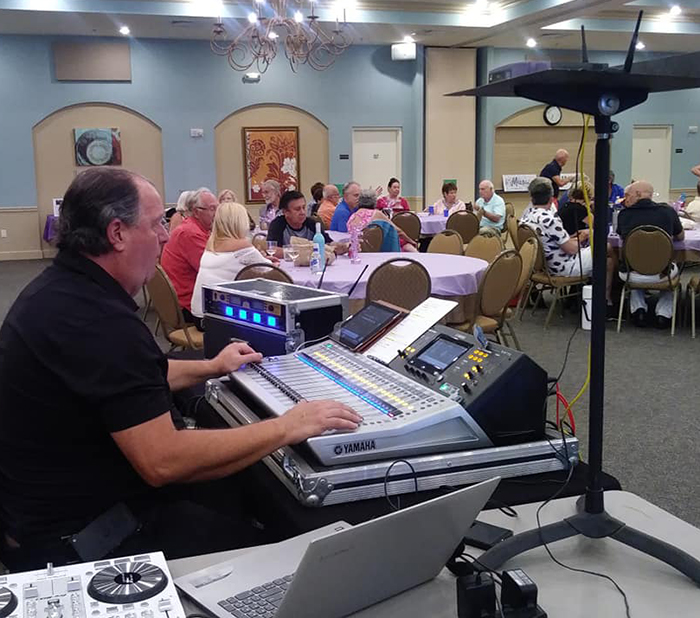
You’ll notice that I have no effects assigned – don’t need ‘em for speech. For equalization, I have high-pass filters assigned to all outputs except for the subwoofers, which get low-pass filters, essentially creating a crossover. I can copy and paste the EQ settings from one input or output channel to another for uniformity and convenience.
I do make fine EQ adjustments to microphones to accommodate the differences between human voices, loudspeaker manufacturers, room acoustics, etc., but all mics have a high-pass filter to avoid clutter and muddiness in frequency ranges that are lower than human voices. Yamaha has teamed up with microphone manufacturers to create EQ structures for their specific mics, and they come with the TF5 as part of their effects library. I find that it’s a great place to start because it saves a lot of time.
I really dislike it when people tap on a mic to see if it’s live. If I get the opportunity, I’ll educate presenters in advance by telling them if they want to see if the mic is on, just speak into it or scratch it.
Solid Approach
Now, about that self-contained band. It was a first for me; a very pleasant experience, and I wonder why more bands don’t do it. There were five musicians, as I recall, with a guitar, keyboards, bass, and drums. The keyboardist was the lead vocalist, the guitarist was also a vocalist, and perhaps also the bassist – I can’t quite recall. (Some days I’m doing good to remember my own name!) There was one additional female vocalist (I think).
The group travels with its own audio engineer, who mixes with an iPad that controls a rack mixer. He sent me a composite L/R signal – two inputs, easy-peasy. The band uses in-ear monitors, and the band’s engineer assigns and mixes effects. Everything is preset for the band, so from an audio perspective, it doesn’t get any easier. The band sets up and is ready for sound check in only a few minutes.
I created a custom fader layer for this event, showing all the inputs and outputs, so I don’t have to switch layers to access them (Figure 1 and 2). That’s one advantage of having the TF5 instead of the TF1 or TF3.
Although it’s overkill as far as the number of inputs and some of the capabilities of the TF Series mixers, I like having all that real estate in front of me. For this particular gig, all of the inputs and sends are visible on a single layer. All of the sends are post-fader so that when I take an input fader down, I won’t still be hearing it in one of the sends.
In concert touring situations, front of house is generally located at an optimal position in the audience area. For corporate events, however, FOH is often tucked out of the way in a corner on the opposite side of the room from the stage. I’m sure they’d put us backstage if they could.
On this gig, FOH (the tech table) was positioned more toward the front along one wall on stage left, so if I was at FOH, I couldn’t hear what the audience was hearing. Fortunately, it’s easy to connect to my TF5 with my iPad and walk the room. I can even go onstage prior to the event and adjust the stage monitors while some of my favorite tunes are playing or while a band is doing a sound check.
It absolutely floats my boat when I can walk the back of the room during a corporate event and hear even coverage with crystal-clear sound that makes sure the audience understands every word that’s being spoken.
